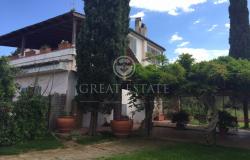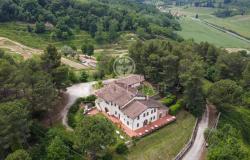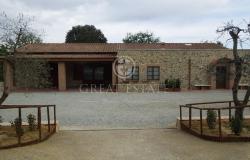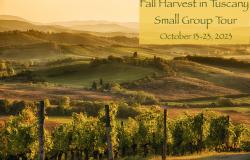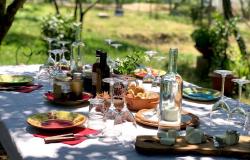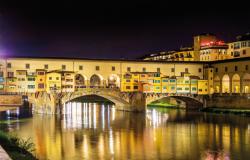Words by Carla Passino
Names can be misleading. Alistair Moffat’s Tuscany A History is not a history book - at least not in the sense of a scholarly treatise examining every period of Tuscan history. No, this is a cavalcade across some of the most fascinating, intriguing and, yes, brutal episodes of the region’s past written in the fast-paced, involving style of an adventure novel.
Moffat is a Scottish author with a passion for (and a home in) Tuscany. Falling in love with the history of the region was, for him, one and the same as falling for the charming town of Pitigliano, where “the story of Tuscany waits to whispers its secrets.” This is because the past, in Tuscany, “is not something apart, categorized as history, something separated from the everyday business of living and making the future. It is an indivisible part of life.”
 So to better understand and live his Tuscan present, Moffat set out to research the past. He acquired so much information that he eventually decided to share it in a book. But rather than chronicle three thousand years of history, he chose to paint a vivid picture of the region’s greatest moments of glory and violence. So while the Etruscan chapter is full of erudite detail on the origin and culture of the Sea people, what comes to live most is the battle in which three Roman soldiers, Horatius Cocles, Spurius Lartius and Titus Herminius fended off the entire Etruscan army long enough for the Romans to take down the only bridge across the river Tiber, which would have given the enemy access to the city.
So to better understand and live his Tuscan present, Moffat set out to research the past. He acquired so much information that he eventually decided to share it in a book. But rather than chronicle three thousand years of history, he chose to paint a vivid picture of the region’s greatest moments of glory and violence. So while the Etruscan chapter is full of erudite detail on the origin and culture of the Sea people, what comes to live most is the battle in which three Roman soldiers, Horatius Cocles, Spurius Lartius and Titus Herminius fended off the entire Etruscan army long enough for the Romans to take down the only bridge across the river Tiber, which would have given the enemy access to the city.
 With the same sense of heroic brutality, Moffat delves into the roots of the Palio di Siena, explaining why the Sienese will not heed justifiable protests from animal rights activists about the welfare of the horses engaged in the competition, and will stoop at anything - bribery, threats, outright violence - to win the race. It’s because “this is emphatically a medieval event, and medieval rules govern it,” he writes, before capturing the noise, the thrill, the thundering hoofbeats of a day in Piazza del Campo. “Hushed, expectant, the crowd waits,” he writes. “And then, as though from nowhere, the runners and riders appear. Like a wave rolling across the Campo, a roar fills the evening air, and the horses shy and skitter sideways.”
With the same sense of heroic brutality, Moffat delves into the roots of the Palio di Siena, explaining why the Sienese will not heed justifiable protests from animal rights activists about the welfare of the horses engaged in the competition, and will stoop at anything - bribery, threats, outright violence - to win the race. It’s because “this is emphatically a medieval event, and medieval rules govern it,” he writes, before capturing the noise, the thrill, the thundering hoofbeats of a day in Piazza del Campo. “Hushed, expectant, the crowd waits,” he writes. “And then, as though from nowhere, the runners and riders appear. Like a wave rolling across the Campo, a roar fills the evening air, and the horses shy and skitter sideways.”
The book’s greatest passage, however, powerfully describes the murder of Giuliano de’ Medici, one of the most shocking moments of Florentine history, not only because Giuliano was the beloved scion of one of Florence’s most powerful families, but also because the assassination took place in a church. “Before the Host was raised from the high altar, the sacristy bell rang for silence. And then all hell broke loose,” writes Moffat. “As Giuliano de’ Medici bowed his head, his companions pulled out their daggers and began a frenzied attack. Baroncelli struck so hard that his blow split open Giuliano’s skull in a shower of blood, and de’ Pazzi stabbed so viciously at the falling body that he accidentally pierced his own thigh. The congregation shrank back in shock.”
 Even the priests were in on the conspiracy, tasked to kill Giuliano’s brother, Lorenzo Il Magnifico. But, says Moffat, they “hesitated fatally, one of them clamping his hand on his victim’s shoulder. This allowed a crucial moment for Lorenzo to turn around and, by good fortune, take only a cut in his neck and not the severance of his carotid artery. Ripping off his cloak and whirling it around his forearm to act as a shield, Lorenzo drew his sword. Maffei and Stefano, the priests, were pushed back, giving him time to leap over the altar rail and run towards the sacristy.”
Even the priests were in on the conspiracy, tasked to kill Giuliano’s brother, Lorenzo Il Magnifico. But, says Moffat, they “hesitated fatally, one of them clamping his hand on his victim’s shoulder. This allowed a crucial moment for Lorenzo to turn around and, by good fortune, take only a cut in his neck and not the severance of his carotid artery. Ripping off his cloak and whirling it around his forearm to act as a shield, Lorenzo drew his sword. Maffei and Stefano, the priests, were pushed back, giving him time to leap over the altar rail and run towards the sacristy.”
Lorenzo escaped alive, and the rest is grand, glorious but also bloodthirsty history. Moffat’s pages drip in blood and gore as he explains how the Pazzi conspirators were impaled and decapitated while the crowd shouted cheerfully: “Palle, palle, palle,” in support of the Medici’s coat of arms.
The book is not for the squeamish but then nor is Tuscan history. As Moffat explains when he justifies his decision to end his story with the bombing of the Uffizi carried out by the mafia in 1993, “the story of Tuscany is by turns sublime and inspiring, but almost never saintly and often brutally violent. Above all, it is a tale of human beings and the extremes they are capable of. And that is at least part of the fascination.”
"Tuscany A History" is available for sale on Amazon.co.uk and Amazon.com through the links below.




